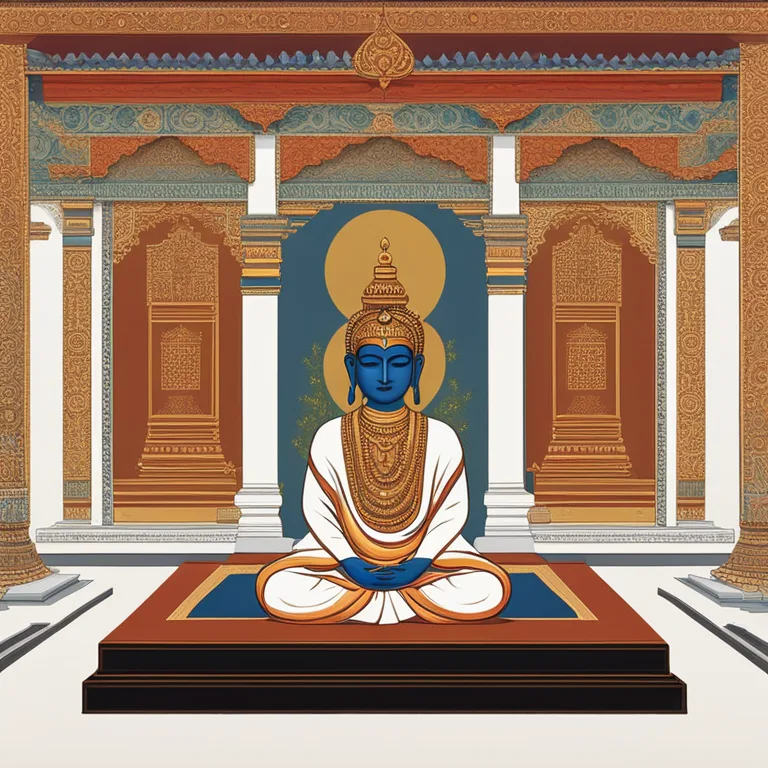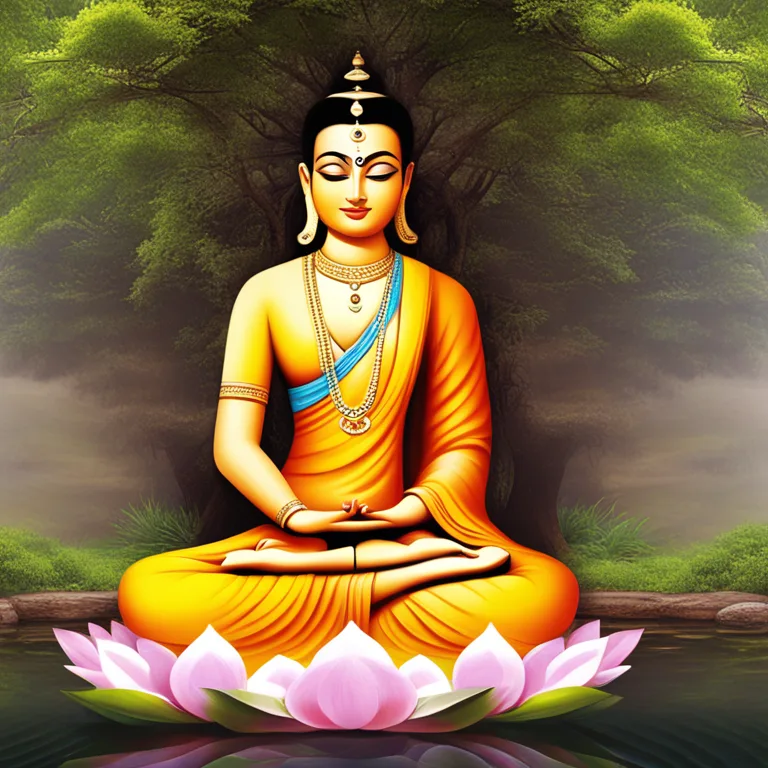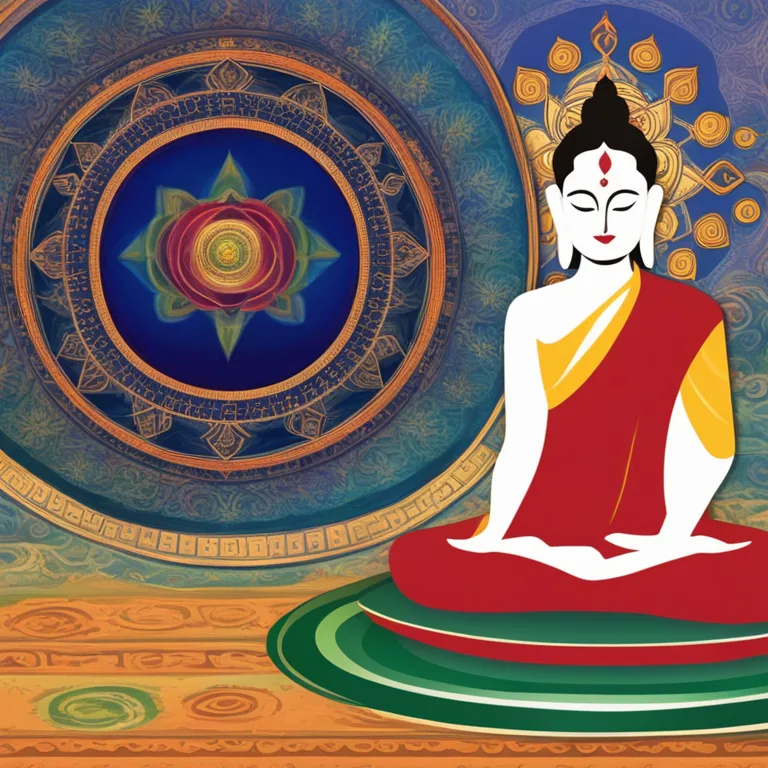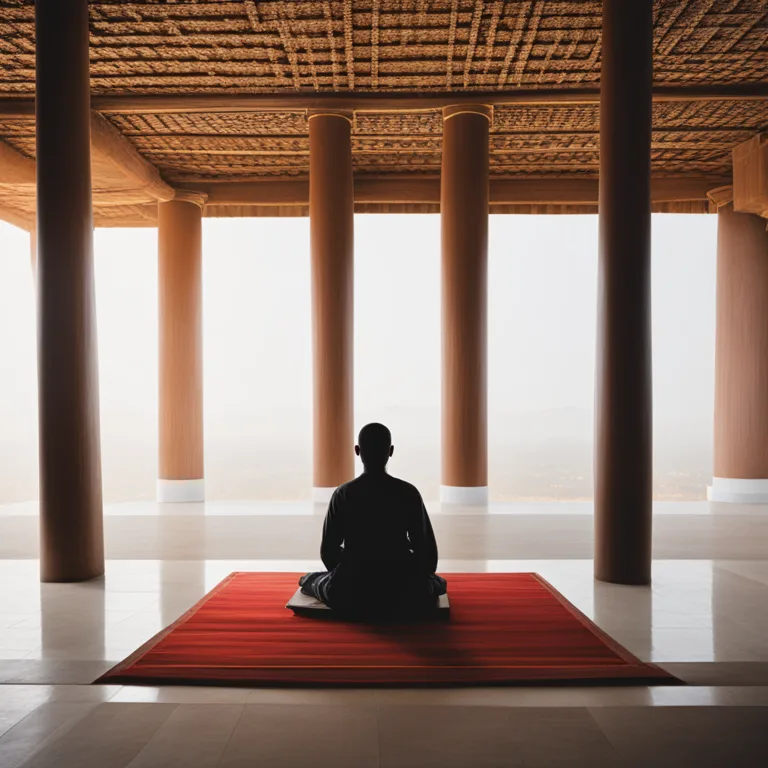
Jain Meditation Techniques Demystified
Learn the ancient practice of Jain meditation for inner peace and self-awareness.
article by Hina Kurosawa
Jainism and Meditation
Jain meditation has been a core practice within Jainism, a religion originating in ancient India. Rooted in non-violence and the pursuit of spiritual independence, Jain meditation aims to achieve clarity of the mind, self-control, and ultimately, liberation of the soul. Characterized by its discipline and silent reflection, this form of meditation requires dedication and an understanding of its underlying principles. Each technique carries the intention of fostering non-attachment, virtue, and enlightenment, ideals that have been revered by Jains for centuries.

Samayika: The Act of Equanimity
Samayika is a fundamental Jain meditation technique aimed at achieving equanimity or a balanced state of mind. Practitioners aim to transcend above the dualities of pleasure and pain, success and failure, thereby reducing attachment and aversion. This practice typically lasts for 48 minutes and involves sitting in a meditative posture, focusing on the present moment. During Samayika, the individual reflects upon the universe's immensity and one's small place within it, which promotes humility and perspective.

Contemplating The Self: Pratyāhāra
A central feature of Jain meditation is the practice of Pratyāhāra, which involves withdrawing the senses from external objects. The goal is to turn one's focus inwards, towards one's own soul and its purity. Ample time is spent in silent self-reflection, exploring the nature of the soul and its relation to the physical world. This detachment is not an escape but rather a deep cleansing of perception, aiding in removing layers of illusion.

Anupreksha: Contemplation Techniques
Anupreksha is the method of active contemplation on various spiritual truths. Jain practitioners use this technique to ponder deeply on different topics such as the impermanence of life, the importance of forgiveness, and the benefits of detachment. The practice involves choosing a particular thought and intensely focusing on it to internalize its spiritual implications. This facilitates a transformation in one's attitudes and behaviors, aligning them with Jain ethical principles.

Lesyā Dhāranā: Color Visualization
Another unique element of Jain meditation is the practice of Lesyā Dhāranā, involving the visualization of different colors associated with various mental states and emotions. Practitioners meditate on specific colors that correspond to positive qualities they wish to imbue within themselves. For instance, visualizing the color white can signify purity and help the meditator inculcate a sense of peace and well-being.
Preksha Meditation: Perception and Awareness
Preksha Meditation is a modern adaptation that combines traditional Jain meditation with contemporary mindfulness techniques. It emphasizes perceiving and observing the inner body processes such as breathing, thoughts, and emotions non-judgmentally. The goal is heightened awareness and self-observation, leading to better control over one's actions and emotional states. This practice can be particularly effective in reducing stress and enhancing concentration.
The Role of Astrology in Practice
While not commonly associated with meditation, some Jain practitioners may also consider astrological conditions to optimize their meditation sessions. Starting from 2024 onwards, individuals may choose to meditate on days where celestial alignments are believed to be conducive to spiritual practices. This can include meditating on auspicious days in the Jain calendar or during specific planetary transits that are said to be favorable for inner growth and reflection.
Published: 12/20/2023
Modified: 12/20/2023
More predictions
Come back here soon to learn more about yourself and your future


Counting Meditation Techniques
An informative guide on the diverse range of meditation practices available in the modern era.


Karate Meditation Techniques Explained
Discover the inner serenity and enhanced focus through the practice of Karate meditation techniques.


Learning Meditation Techniques
Learn key meditation practices for inner peace and clarity in our comprehensive guide.